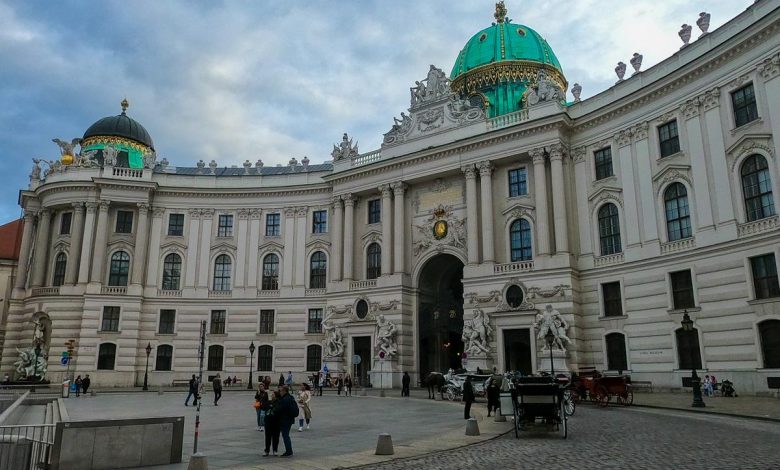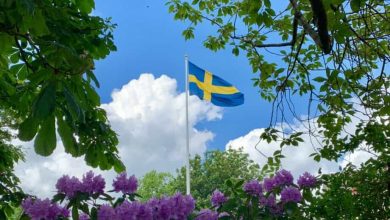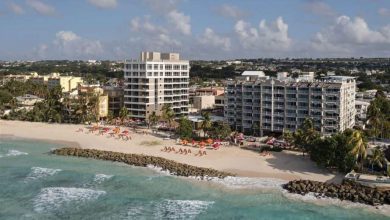Hofburg: Cultural Heritage Profile

Diplomat.Today
Welcome to our comprehensive travel guide to visiting Hofburg, a destination known for its unique blend of cultural richness, history and educational value in Vienna, Austria.
Here you will find detailed insight into what makes Hofburg such a unique cultural attraction.
About
Gallery
Details
Assessment of cultural heritage
Universal appeal and cultural authenticity
Cultural wealth and educational value
Conservation and integrity
Accessibility and visitor engagement
Overall rating: 4.7/5
Global influence
- The Hofburg in Vienna is recognized worldwide as the former imperial palace of the Habsburg dynasty. For over 600 years it symbolized the power and influence of the Austrian Empire.
- It attracts many international visitors, contributing to Vienna’s status as a top tourist destination. The palace complex, including the Sisi Museum and other attractions, is a major draw for tourists around the world.
- The Hofburg’s influence on global culture and art is clearly visible through its architectural grandeur. It is home to several museums, imperial apartments and priceless art collections that reflect the opulence and artistic achievements of the Habsburg era.
- The venue has hosted international events including diplomatic meetings, cultural exhibitions and royal ceremonies, showcasing its continued role in international collaborations and diplomacy.
Historical impact
- The Hofburg has witnessed important historical events. As the seat of the Austro-Hungarian Empire, it witnessed the coronations, weddings and funerals of the Habsburg rulers, which determined the course of European history.
- Architecturally and archaeologically, the Hofburg represents a mix of medieval, Renaissance and Baroque styles, with its wings and courtyards reflecting the evolving architectural tastes and techniques of different historical periods.
- It has made substantial contributions to local and national history. For centuries it served as the center of imperial power and administration, influencing the governance and cultural development of Austria and its territories.
- Notable historical figures associated with the Hofburg include Emperor Franz Joseph and Empress Elisabeth (“Sisi”), whose lives and legacies are intertwined with the palace’s history and continue to arouse public fascination today.
Conservation efforts
- Current conservation projects aim to preserve the Hofburg’s architectural elements, interior decorations and historical artifacts to ensure their integrity for future generations.
- Organizations such as the Schatzkammer Museum and the Austrian Federal Monuments Office are actively involved in the preservation of the Hofburg and oversee maintenance and restoration efforts.
- Funding and support for conservation comes from a variety of sources, including government grants, private donations, and income from tourism and cultural events held within the complex.
- Community involvement in conservation is promoted through educational programs, volunteer opportunities and public engagement initiatives aimed at raising awareness of the historical significance of the Hofburg and garnering support for its preservation.
Historical importance
Located in the center of Vienna, the Hofburg has enormous historical significance. It was founded in the 13th century and served as the main imperial palace of the Habsburg dynasty for over 600 years. Notable figures such as Empress Elisabeth of Austria, also known as Sisi, and Emperor Franz Joseph I were associated with the palace, and it was the nerve center of the vast Habsburg Empire.
Cultural importance
The Hofburg is deeply woven into the cultural fabric of Vienna and beyond. Serving as the heart of power in Vienna, it is a symbol of imperial grandeur and has influenced local traditions, art and community activities. The palace has been a focal point for important events, ceremonies and diplomatic activities, contributing to its enduring cultural relevance.
Architectural style
Due to its expansion over the centuries, the Hofburg represents a mix of architectural styles. It shows elements from the Gothic, Renaissance, Baroque and Rococo styles. The unique design elements include grand courtyards, opulent ballrooms and ornate facades, reflecting the evolving tastes and influences of different periods.
Visitor experience
Visitors to the Hofburg can expect a rich and immersive experience. Guided tours provide insight into the history of the palace, royal apartments and Sisi Museum, offering a glimpse into the lives of the imperial family. Special exhibitions and interactive activities often showcase the palace’s art collection and historical artifacts, providing an engaging experience. The general atmosphere exudes grandeur and luxury and takes visitors back to times gone by.
Accessibility and amenities
The Hofburg is accessible to various groups, including families and the disabled, with facilities such as ramps and lifts for mobility assistance. The palace offers toilets, cafes and gift shops, ensuring a comfortable and convenient visit for all guests.
Best time to visit
- Early morning (8:00 AM – 10:00 AM): Visiting early in the morning will avoid the peak crowds, giving you a calmer experience to explore the architectural beauty and historical exhibits.
- Weekdays (Monday – Friday): Weekdays are generally less crowded than weekends, which provides a better opportunity to enjoy the various attractions in the Hofburg complex without long waits.
- Off-peak hours (spring and autumn): Visiting in spring and autumn ensures milder weather and fewer tourists, enhancing your overall experience and allowing you to fully appreciate the cultural richness and educational value of the site.
Ratings and reviews
The Hofburg is highly praised for its historical significance, architectural splendor and fascinating exhibitions. Visitors often praise the immersive experience and informative tours. Common praise includes its well-preserved interior, while some visitors note that advance reservations are required due to its popularity. Compared to similar attractions, the Hofburg stands out for its comprehensive display of imperial history and its extensive collection of artifacts.
Photographic possibilities
The Hofburg offers plenty of photogenic spots, including the grand exterior facades, the opulent imperial apartments and the picturesque courtyards. For the best photos, early morning or late afternoon light can enhance the grandeur of the palace, while the surrounding gardens and squares provide excellent vantage points to capture its architectural splendor.
- Universal appeal and cultural authenticity – 95
- The Hofburg is a monumental symbol of the Habsburg dynasty and exudes imperial grandeur and royal majesty.
- The palace complex authentically maintains Viennese traditions and cultural practices, offering visitors a glimpse into Austria’s imperial heritage.
- Cultural wealth and educational value – 90
- With several museums, including the Sisi Museum and the Imperial Apartments, Hofburg offers rich educational opportunities about the impact of the Habsburgs on European history and culture.
- Tours and well-organized audio guides enhance the educational experience and ensure visitors understand the historical and cultural complexities of the site.
- Preservation and integrity – 85
- Extensive efforts are made to preserve the Hofburg’s architectural splendor, interior decorations, and historical artifacts.
- Organizations such as the Schatzkammer Museum and the Austrian Federal Monuments Office are actively involved in these conservation initiatives, to ensure that the palace remains intact for future generations.
- Accessibility and Visitor Engagement – 90
- The Hofburg offers excellent accessibility, including ramps and lifts for those with mobility issues and extensive facilities such as cafes and gift shops for all visitors.
- Interactive exhibitions and engaging tours increase visitor engagement, allowing tourists to fully immerse themselves in Hofburg’s imperial history and cultural treasures.
“`



